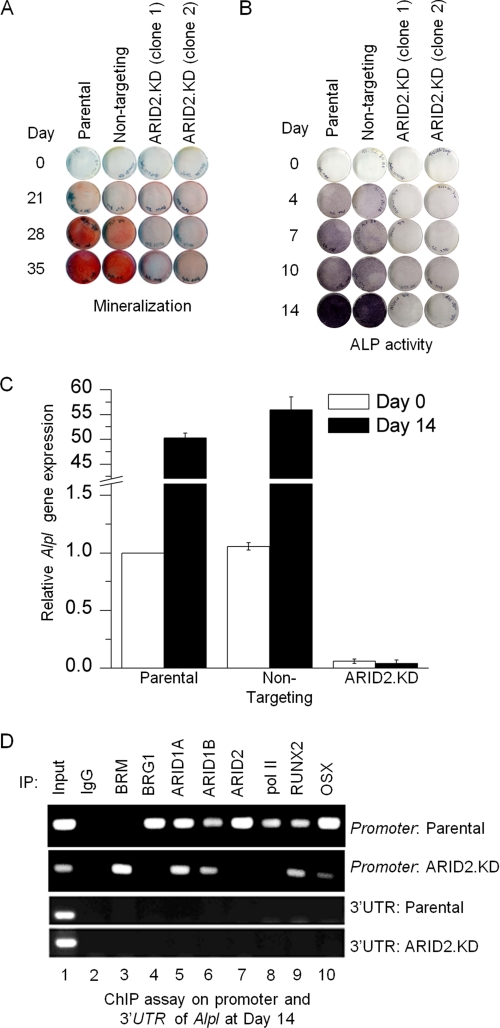FIGURE 2.
Stable depletion of ARID2 represses osteoblast differentiation. A, parental cells, a cell line isolated after transfection with a vector encoding a non-targeting control sequence, or ARID2-depleted cells were treated with differentiation medium for the time intervals indicated and then stained with Alizarin Red S to reveal the presence of calcium-containing compounds in the cell matrix (mineralization). B, the same panel of cell lines was induced for the time intervals indicated and stained with 5-bromo-4-chloro-3-indolyl phosphate/nitro blue tetrazolium to reveal alkaline phosphatase (ALP) activity as the production of a purple-black deposit following substrate hydrolysis. C, parental cells, the cell line transfected with the non-targeting control sequence, or ARID2-depleted cells were induced for the time intervals indicated, at which point total RNA was isolated and qRT-PCR was performed to determine Alpl expression levels. Shown here are mean values relative to the parental line with S.E. (n = 3). D, ChIP analysis was performed on the Alpl promoter from parental cells and ARID2-depleted cells at day 14 after induction to determine the association pattern of the ATPase and ARID family subunits as well as selected transcriptional activators, as indicated in the figure. The same immunoprecipitated DNA was also amplified with primers corresponding to the 3′-UTR of Alpl as a negative control. IP, immunoprecipitation.

